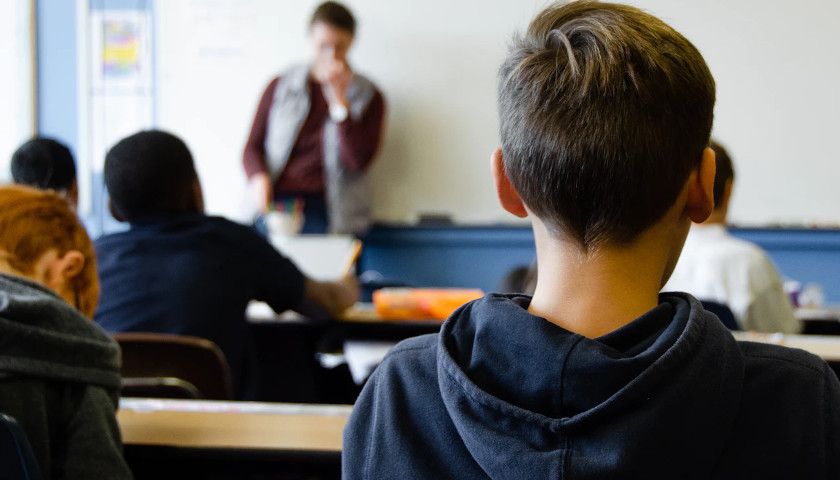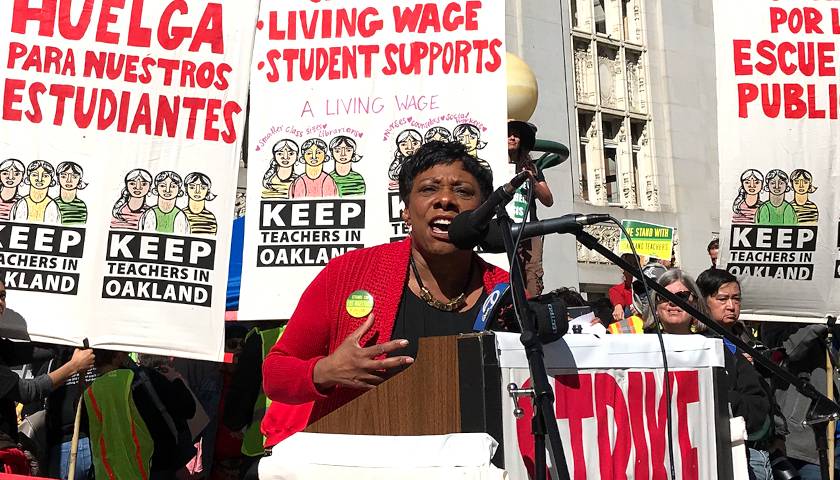by George Rasley
Our late friend Phyllis Schlafly, the First Lady of the Conservative Movement, was fond of saying that the most important election wasn’t President, it was Republican Precinct Committeeman, because that was the gateway to the Republican Party organization, and through it the ability to endorse candidates and set the GOP Platform.
Mrs. Schlafly had a good point, but if there is another office that vies for importance with Republican Precinct Committeeman it is membership in your local school board.
And this year school board elections are more important than ever, because so much of immediate import is at stake.
The first issue many school boards must address this year is whether and how to reopen schools – and make no mistake this decision by a minor elected body will have vast economic and social impact on your community.
If your schools do not open, or open as “online only” your community will remain in a form of lockdown, with the accompanying devasting economic consequences, because a significant portion of your community’s workforce will be unable to return to work without the full day of childcare schools provide.
USA Today reported 4 in 10 working adults have children under 18. Nearly 60 percent of children under 5 participated in regular weekly care arrangements and a third were enrolled in a child care program of some kind before the coronavirus struck.
According to Chicago Booth’s Jonathan Dingel and Joseph S. Vavra and Northwestern postdoctoral scholar Christina Patterson, 50 million American workers with children younger than 14 will have a serious problem going back to work if childcare is unavailable. That’s almost a third of the prepandemic workforce of 160 million.
“Under a policy where young workers return to work while schools remain closed, 35 million workers who are over 55 would not be able to return to work, and another 16 million who are under 55 would be constrained by child-care obligations,” they write.
According to a McKinsey study, 16 percent of the workforce—representing 26.8 million workers—are dependent on childcare to work. Public schools provide the necessary childcare to a significant portion of those workers.
The same McKinsey paper cited one recent analysis projecting that students could return in the fall having progressed only 70 percent of a grade in reading and less than 50 percent of a grade in math during the 2019–20 school year. If closures extend beyond the fall, this shortfall could be even greater, with negative consequences for individual students and society as a whole.
You get the picture – if schools remain closed the economy remains closed – and the economic misery in your community rises.
But there’s another issue of immediate import your local school board must also address – keeping your local schools free from Leftwing propaganda in the form of the 1619 Project and the Marxist agenda of BLM, presented through their education franchising operation, with local cells of teachers’ union activists as the operators of what amounts to an in-school attack on the fundamental values of Western Civilization.
K–12 educators sympathetic with the Far Left movement have successfully promoted the “Black Lives Matter at School” program, bringing its Marxist ideology into a growing number of secondary and even elementary classrooms.
As Peter C. Myers documented in an article for city-journal.org:
In the BLM statement “What We Believe,” which includes the “13 guiding principles” from which the school curricula are developed, one finds affirmations reminiscent of the best of the black freedom movement of a half-century ago: “We acknowledge, respect, and celebrate differences and commonalities”; “We work vigorously for freedom and justice for Black people and, by extension, all people.” Likewise, in the National Black Lives Matter in School Week of Action Starter Kit appears this comforting guidance on how to discuss BLM with young children:
We can also mention the movement as a group of people who want to make sure that everyone is treated fairly, regardless of the color of their skin. We can say . . . “The Civil Rights Movement, with people we know about, like Martin Luther King, Jr., and Rosa Parks, worked to change laws that were unfair. The Black Lives Matter movement is with people who want to make sure that everyone is treated fairly, because, even though many of those laws were changed many years ago, some people are still not being treated fairly.”
Looking beyond those relatively anodyne representations, however, one finds unambiguous expressions of social-justice extremism.
Among BLM’s 13 principles, for instance, are various commitments to intersectionality—that is, the focus on overlapping categories of racial, gender, or sexual victimization. BLM dedicates itself to dismantling “cisgender privilege,” “freeing ourselves from the tight grip of heteronormative thinking,” and “disrupting the Western-prescribed nuclear family structure requirement.” The Starter Kit section on teaching young children declares: “Everybody has the right to choose their own gender by listening to their own heart and mind. Everybody gets to choose if they are a girl or a boy or both or neither or something else, and no one else gets to choose for them.”
BLM’s teaching about race is no less radical. The first sentence of the introduction to the Teaching for Black Lives textbook reads: “Black students’ minds and bodies are under attack.” Anecdotes of abusive treatment follow, preparing the central thrust of the BLM-at-school pedagogy: “The school-to-prison-pipeline is a major contributor to the overall epidemic of police violence and mass incarceration that functions as one of sharpest edges of structural racism in the United States.” The stoking of readers’ anger continues with this distorted characterization of the galvanizing event for BLM’s street protests: “In August of 2014, Michael Brown was killed in the streets of Ferguson, Missouri, his body left in the streets for hours as a reminder to the Black residents in the neighborhood that their lives are meaningless to the American Empire.”
Instances of such incendiary rhetoric recur in the recommended instructional materials. The animating idea throughout is that African-Americans, intersecting with a familiar roster of other aggrieved identity groups, face systemic oppression, as they always have in America—even today, 50 years into the post–civil rights era. For all such groups and their “allies,” the proper relation to society must therefore be one of opposition, and a primary function of the education system must be to instruct students in the rationale, means, and ends of resistance—the more radical, the better.
Commonly recognized eminences such as Frederick Douglass and Martin Luther King, Jr., may be honored for their resistance, so far as it extended, but the real heroes, according to BLM’s pedagogues, are the most extreme figures and factions in the history of black protest. Presenting U.S. history as an unbroken chain of oppression, BLM’s instructional materials endeavor to burnish the reputations of black nationalists and socialists including Malcolm X and the Nation of Islam, Black Power founder Stokely Carmichael, and the leadership of the Black Panther Party. In a chapter devoted to them in Teaching for Black Lives, the Panthers are characterized as “one of the most important human rights organizations of the late 1960s,” a group whose “revolutionary socialist ideology” is credited for inspiring noble endeavors to provide decent housing, education, and health care to impoverished black communities and whose history “holds vital lessons for today’s movement to confront racism and police violence.”
Many school board elections are “nonpartisan” meaning there is no party identification to guide you on which candidates might lean conservative – the only way to know for certain is to pin down the candidates and demand they commit to reopening your local schools and just as importantly, commit to keeping out of your school’s Marxist propaganda in the form of Teaching Black Lives Matter in schools and any instructional materials based on their 13 principles.




